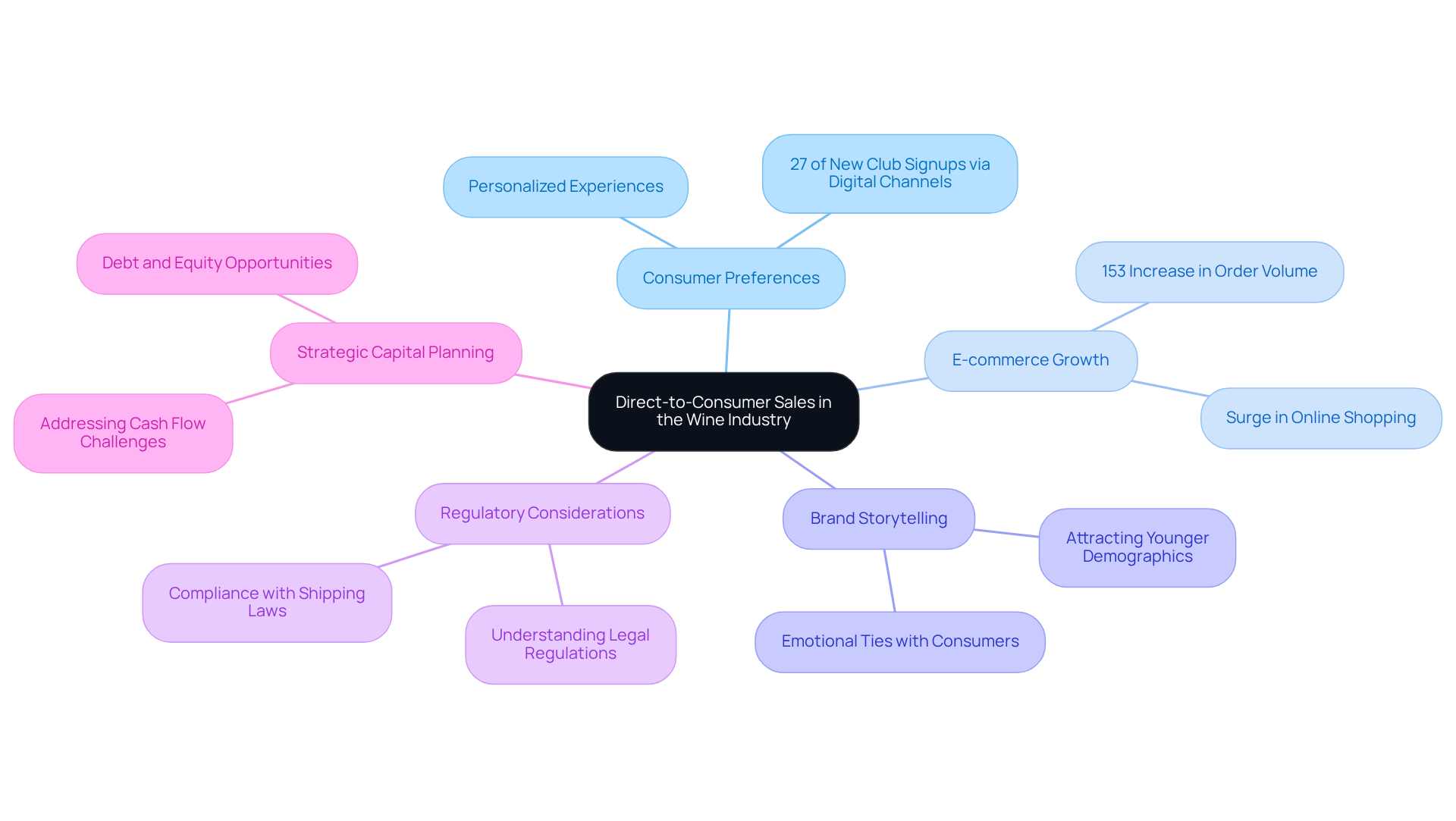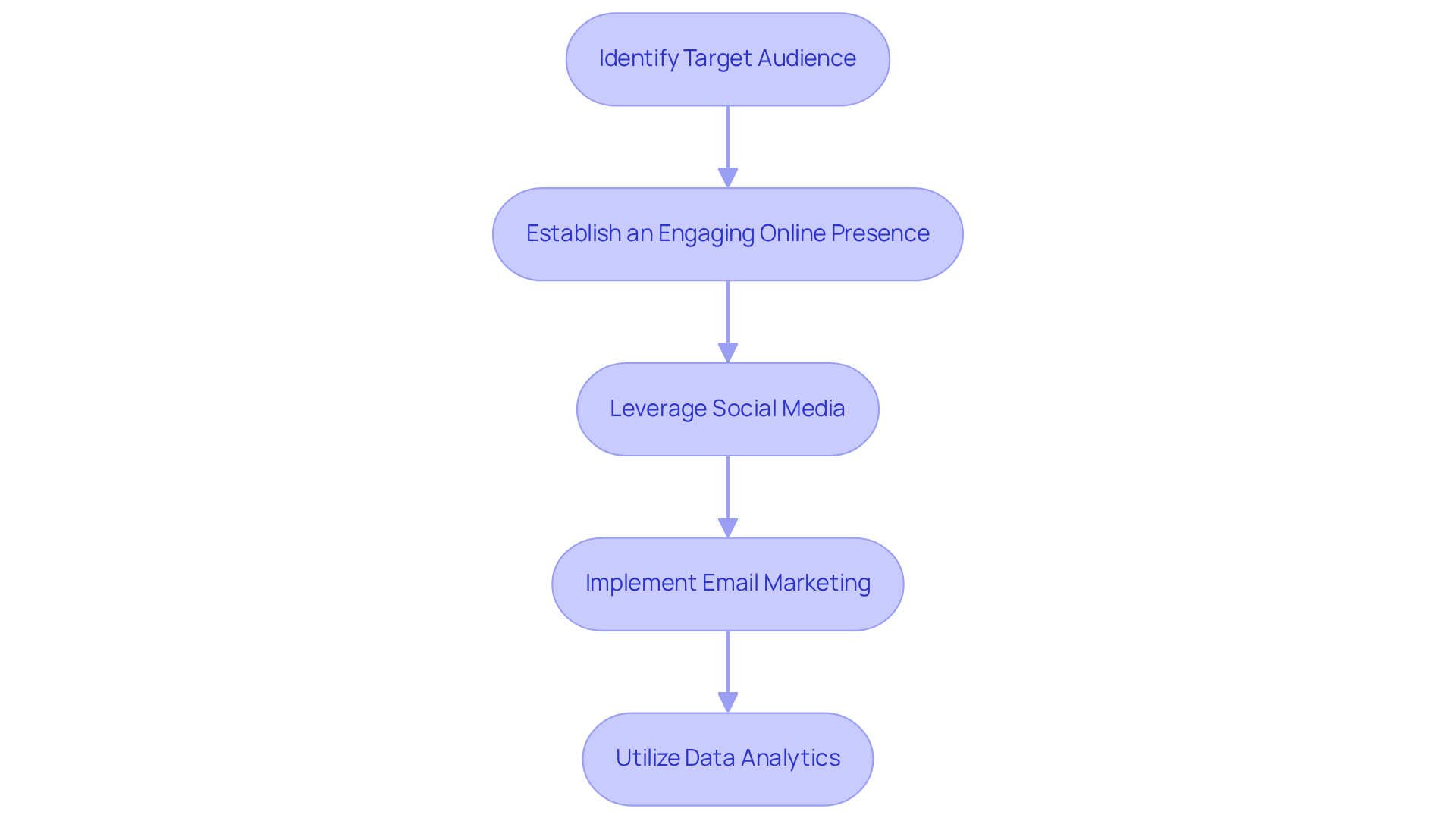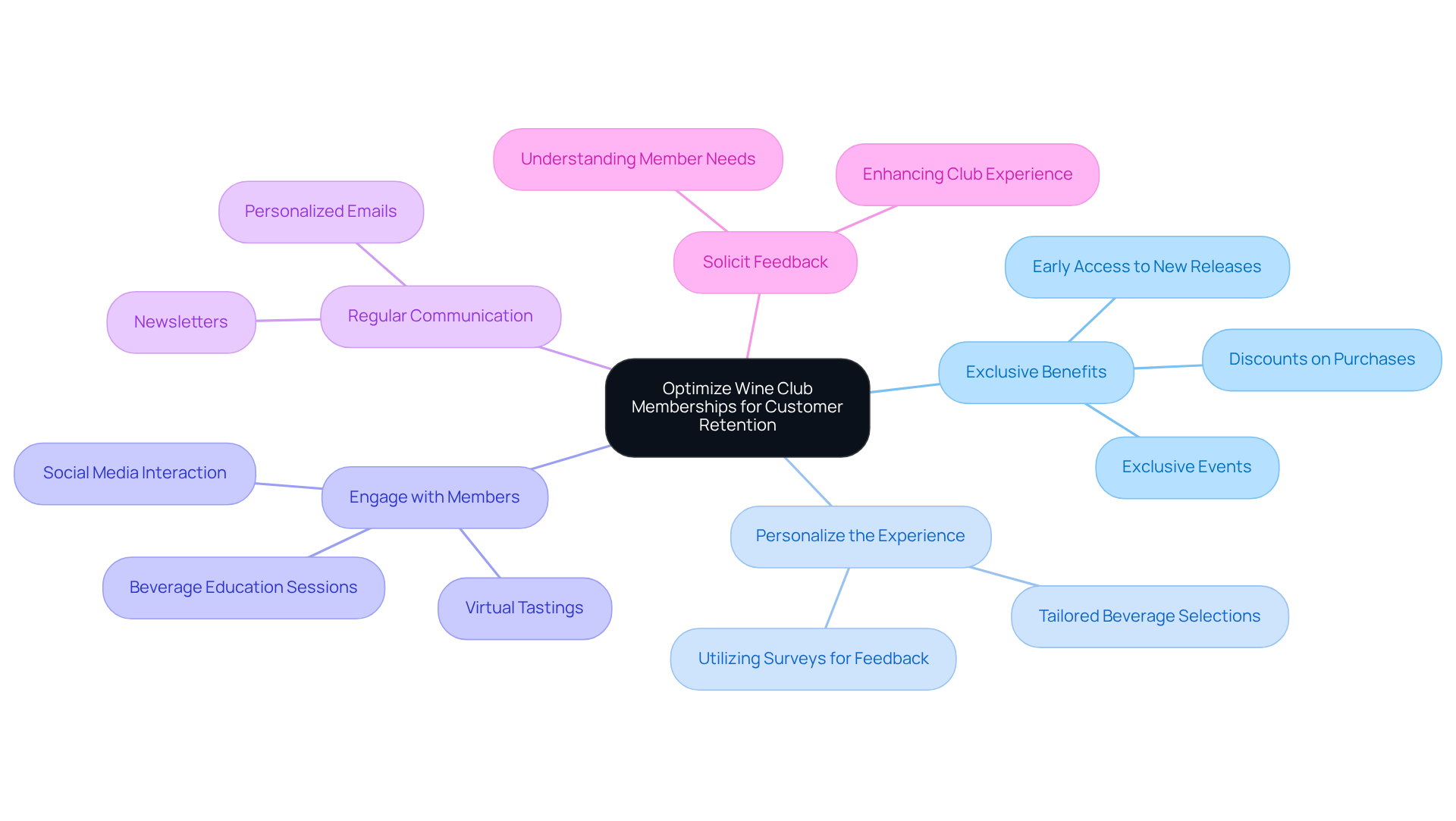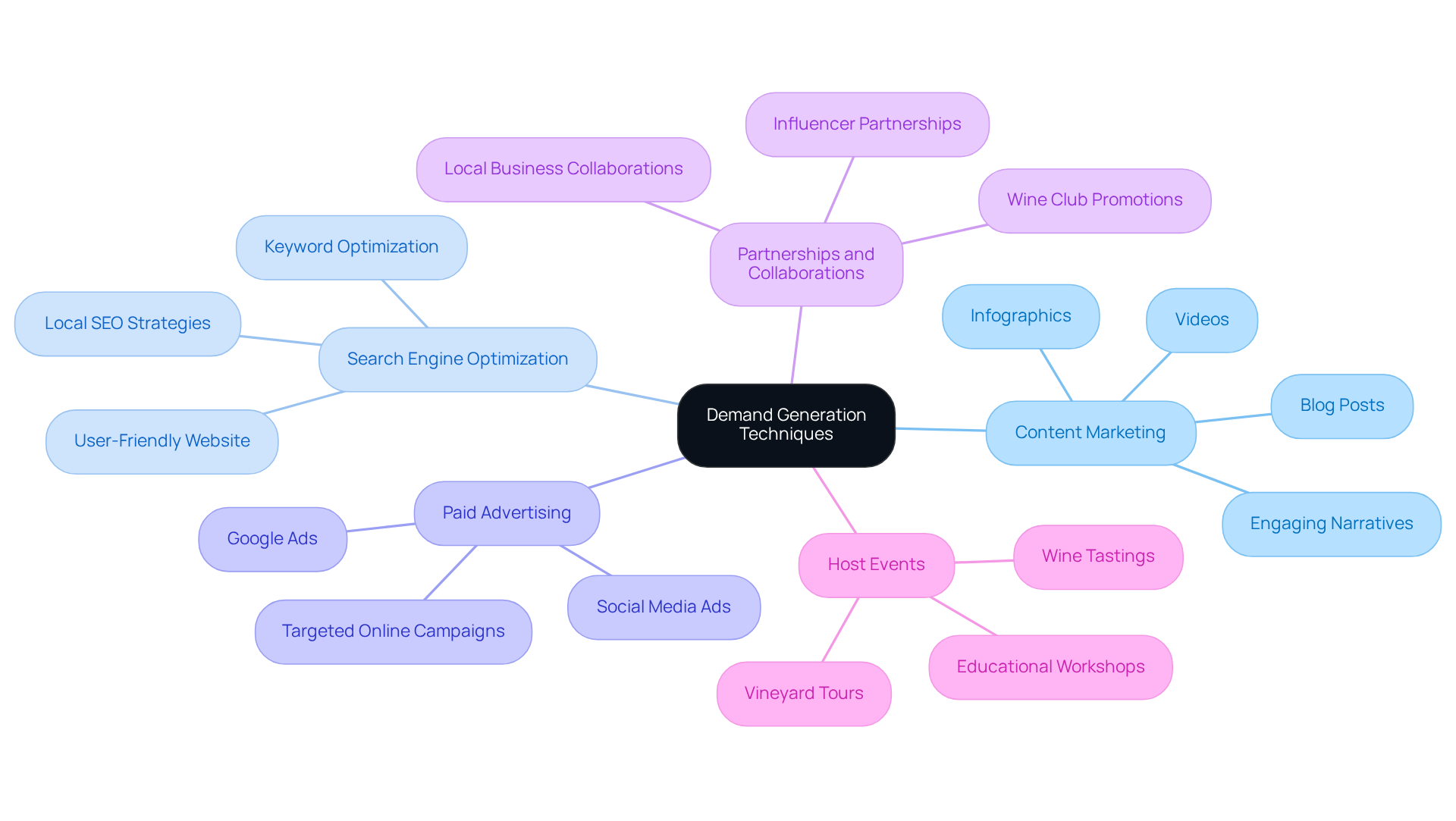Overview
This article presents proven strategies for achieving direct-to-consumer (DTC) success in the wine industry. It underscores the critical importance of establishing personal connections with customers and effectively leveraging e-commerce. Key tactics are outlined, including:
- A deep understanding of consumer preferences
- Enhancing online presence
- Utilizing social media
- Implementing effective email marketing
These strategies are designed to foster customer loyalty and drive sales, positioning wineries for growth in an increasingly competitive market. By adopting these approaches, wineries can not only navigate challenges but also thrive in the dynamic landscape of the wine industry.
Introduction
The wine industry is experiencing a transformative shift as wineries increasingly adopt direct-to-consumer (DTC) sales, presenting unique opportunities to connect with customers and enhance profitability. By circumventing traditional retail channels, wineries can cultivate loyalty through personalized experiences and compelling brand narratives.
However, navigating the complexities of this model raises critical questions:
- What strategies can wineries employ to effectively engage consumers and drive sales in an ever-evolving market?
This article explores proven tactics for achieving DTC success, providing insights that empower wineries to thrive in a competitive landscape.
Understand Direct-to-Consumer Sales in the Wine Industry
Direct-to-consumer (DTC) sales in the wine industry represent a strategic shift, allowing wineries to focus on selling wine directly to consumers while bypassing traditional retail channels. This model not only fosters personal connections with customers but also enhances loyalty and increases profit margins. Key aspects to consider include:
- Consumer Preferences: Today’s consumers increasingly favor personalized experiences and direct engagement with brands. Wineries must adapt by offering tailored products and services that resonate with their audience. Notably, 27% of new club signups for vineyards utilizing digital channels emphasize the significance of an online presence.
- E-commerce Growth: The surge in online shopping has fundamentally transformed the wine market. Wineries should for selling wine to expand their reach and simplify the purchasing process. E-commerce order volume has witnessed a remarkable 153% increase during market expansions, underscoring the potential of online sales.
- Brand Storytelling: Compelling storytelling can effectively distinguish a vineyard in a competitive landscape. By conveying their distinctive narratives, producers can forge emotional ties with consumers, thereby strengthening loyalty. This approach is particularly effective in attracting younger demographics, who are increasingly drawn to authentic and relatable brand stories.
- Regulatory Considerations: It is crucial for beverage producers to understand the legal regulations governing DTC sales in their regions, including shipping laws and tax implications. Compliance with these regulations is essential for successful operations in the DTC space.
- Strategic Capital Planning: Wineries should focus on strategic capital planning for debt, equity, or acquisition opportunities to support their DTC initiatives. This planning is vital for addressing cash flow challenges and adapting to market conditions.
By grasping these fundamentals, businesses can strategically position themselves to implement successful DTC strategies, ultimately driving growth and enhancing consumer engagement.

Develop Effective DTC Sales Strategies
To develop effective direct-to-consumer (DTC) sales strategies, wineries must adopt a strategic approach that encompasses several key steps:
- Identify Target Audience: Conduct comprehensive market research to pinpoint your ideal customers. Analyze demographics, preferences, and purchasing behaviors to tailor your offerings effectively.
- Establish an Engaging Online Presence: Design a user-friendly website that showcases your identity, products, and unique story. Ensure it is mobile-optimized and equipped with e-commerce capabilities to facilitate seamless transactions.
- Leverage Social Media: Engage consumers on platforms like Instagram and Facebook by sharing visually appealing content, behind-the-scenes insights, and promotional offers. This approach not only builds a community around your brand but also enhances consumer loyalty.
- Implement Email Marketing: Cultivate an email list to maintain direct communication with clients. Regular newsletters highlighting product launches, exclusive offers, and tailored suggestions can significantly improve client loyalty.
- Utilize Data Analytics: Regularly to refine your strategies. Employ analytics tools to track website traffic, conversion rates, and client feedback, enabling informed decision-making.
By implementing these strategies, wineries can not only significantly boost their DTC sales through selling wine but also foster enduring relationships with consumers.

Optimize Wine Club Memberships for Customer Retention
To optimize wine club memberships for customer retention, it is essential to implement effective strategies that resonate with your audience:
- Offer Exclusive Benefits: Providing members with unique perks—such as early access to new releases, exclusive events, and discounts on purchases—enhances the value of membership. This approach not only enriches the customer experience but also aligns with the objective of transforming casual buyers into devoted club members by selling wine.
- Personalize the Experience: Tailoring beverage selections based on members' preferences and past purchases is crucial. By utilizing surveys to gather feedback, you can adjust your offerings related to selling wine accordingly, ensuring that each member feels valued and understood.
- Engage with Members: Fostering a sense of community is vital. Hosting virtual tastings, beverage education sessions, and member-only events encourages interaction. Additionally, leveraging social media groups can help craft compelling narratives that resonate with your audience, ultimately strengthening brand loyalty in the context of selling wine.
- Regular Communication: Keeping members informed about upcoming releases, events, and promotions through regular newsletters and personalized emails is essential. This consistent engagement is critical for building that drive growth in selling wine.
- Solicit Feedback: Actively seeking feedback from members allows you to understand their needs and preferences better. Utilizing this information consistently enhances the club experience, ensuring that your strategies remain aligned with the evolving preferences of your clientele.
By concentrating on these aspects, establishments can significantly improve their club memberships, resulting in heightened customer satisfaction and loyalty.

Implement Demand Generation Techniques to Drive Sales
To implement effective , wineries must embrace a multifaceted approach that not only drives sales but also focuses on selling wine to fortify their market presence.
- Content Marketing: Crafting valuable content is essential. This includes blog posts, videos, and infographics that educate and engage your audience on topics such as wine production, tasting notes, and food pairings. Captivating narratives foster brand loyalty and establish your winery as an authority in the industry.
- Search Engine Optimization (SEO): Enhancing your website and content for search engines is crucial for visibility. By utilizing relevant keywords and ensuring a user-friendly site, wineries can significantly increase organic traffic. In 2025, establishments prioritizing SEO are projected to experience substantial improvements in online visibility, drawing in more prospective clients.
- Paid Advertising: Investing in targeted online advertising campaigns through platforms like Google Ads and social media is vital. Focus on reaching your ideal customer demographics, which can lead to a remarkable increase in e-commerce order volume. For instance, wineries that effectively leverage digital marketing have seen a 153% rise during market expansions.
- Partnerships and Collaborations: Collaborating with local businesses, influencers, and wine clubs broadens your reach. Joint promotions introduce your brand to new audiences, enhancing visibility and driving sales. Partnering with complementary brands can effectively double your reach, attracting a wider audience.
- Host Events: Organizing wine tastings, vineyard tours, and educational workshops engages potential customers. These events create memorable experiences that encourage purchases and foster long-term relationships. Tracking attendance and participant feedback is essential for evaluating the success of these experiential marketing strategies.
By employing these demand generation techniques, wineries can effectively drive sales through selling wine and enhance their market presence, ensuring competitiveness in an evolving industry.

Conclusion
The direct-to-consumer (DTC) sales model in the wine industry stands as a transformative approach that empowers wineries to forge personal connections with their customers, thereby enhancing loyalty and profitability. By strategically focusing on DTC, wineries can adeptly navigate the evolving market landscape, ensuring they meet consumer demands while maximizing their sales potential.
Key insights from the article underscore the critical importance of:
- Understanding consumer preferences
- Harnessing the growth of e-commerce
- Employing compelling brand storytelling
Furthermore, optimizing wine club memberships and implementing demand generation techniques are essential for nurturing enduring customer relationships and driving sales. Collectively, these strategies contribute to the establishment of a robust DTC framework that supports sustainable growth within the wine industry.
As the market continues to evolve, embracing these proven strategies will be vital for wineries seeking to thrive in a competitive environment. By prioritizing direct engagement, personalized experiences, and effective marketing techniques, wineries can not only elevate their sales but also cultivate a loyal customer base that will champion their success for years to come. The future of wine sales is firmly in the hands of those who adapt and innovate, making DTC a crucial focus for any forward-thinking winery.
Frequently Asked Questions
What are direct-to-consumer (DTC) sales in the wine industry?
Direct-to-consumer (DTC) sales in the wine industry involve wineries selling wine directly to consumers, bypassing traditional retail channels. This model fosters personal connections with customers, enhances loyalty, and increases profit margins.
Why are consumer preferences important for wineries?
Consumer preferences are important because today's consumers favor personalized experiences and direct engagement with brands. Wineries need to adapt by offering tailored products and services that resonate with their audience.
How has e-commerce impacted the wine market?
E-commerce has fundamentally transformed the wine market, with a significant increase in online shopping. Wineries should leverage e-commerce platforms to expand their reach and simplify the purchasing process, as evidenced by a 153% increase in e-commerce order volume during market expansions.
What role does brand storytelling play in the wine industry?
Compelling storytelling helps distinguish a vineyard in a competitive landscape by conveying unique narratives. This approach strengthens emotional ties with consumers and is particularly effective in attracting younger demographics who prefer authentic and relatable brand stories.
What regulatory considerations should wineries keep in mind for DTC sales?
Wineries must understand the legal regulations governing DTC sales, including shipping laws and tax implications. Compliance with these regulations is essential for successful operations in the DTC space.
Why is strategic capital planning important for wineries?
Strategic capital planning is vital for wineries to address cash flow challenges and adapt to market conditions. It involves planning for debt, equity, or acquisition opportunities to support DTC initiatives.




